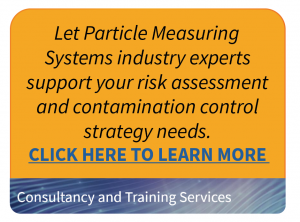The latest Annex 1 offers several updated expectations on cleanroom cleaning, decontamination and disinfection.
Definitions
- Cleaning (NEW)A process for removing contamination e.g. product residues and disinfectant residues.
- Decontamination The overall process of removal or reduction of any contaminants (chemical, waste, residue or microorganisms) from an area, object, or person. The method of decontamination (e.g. cleaning, disinfection, sterilization) should be chosen and validated to achieve a level of cleanliness appropriate to the intended use of the item decontaminated.
(this definition was added in rev 2017; significant detail was added to rev 2020). - Disinfection The process by which the reduction of the number of microorganisms is achieved by the irreversible action of a product on their structure or metabolism, to a level judged to be appropriate for a defined purpose.
- Added in Annex1 rev.2017 – Glossary = Disinfection: the process by which surface bioburden is reduced to a safe level or eliminated. Some disinfection agents are effective only against vegetative microbes, while others possess additional capability to effectively kill bacterial and fungal spores
– in Annex1_2008 = the word ‘Sanitation’ was used but it was not in the glossary
- Added in Annex1 rev.2017 – Glossary = Disinfection: the process by which surface bioburden is reduced to a safe level or eliminated. Some disinfection agents are effective only against vegetative microbes, while others possess additional capability to effectively kill bacterial and fungal spores
There are three main points to keep in mind from the latest Annex 1 on this subject:
1. Cleanroom Cleaning and Disinfection are a part of a CCS
As specified in the following sections: 2.5, 4.12, 8.46, cleaning and disinfection are clearly described
as parts of the Contamination Control Strategy (CCS) with the following considerations:
- There is a clear need for a specific cleaning and disinfection program
- A decontamination strategy should be based on appropriate risk assessment and mitigation measures.
- The appropriate disinfectant for materials entering into sterile areas should be defined based on the QCP of the biocide.
- Biocidal effectiveness and contact time should be carefully evaluated.
- Alcohol is not the preferred disinfectant.
2. Clean before Disinfecting
Sections 4.24 and 4.36 address this issue.
- Cleaning is an important step of the decontamination process
- Cleaning procedures should be demonstrated to be effective.
- Clear expectation that cleaning should be performed before disinfecting
3. Annex 1 focuses on validation of disinfection process
Section 4.37 starts with “The disinfection process should be validated.” This should include:
- Exhaustive validation studies supporting disinfectants effectiveness.
- Clear description of the intended purpose of the disinfection when designing a reliable validation of a disinfection process.
The PMS Advisory Team supports Pharma Companies in defining effective contamination control strategies including cleaning and disinfection. PMS strongly emphasizes the importance of cleaning and recommends specific decontamination procedures based on QRM, depending on biocides’ intended purpose. Low residues disinfectants are recommended for lean and reliable cleaning and disinfection SOPs.
Note: see more about the specific sections and details regarding this topic by watching this video on Annex 1 updates regarding Cleaning & Disinfection

